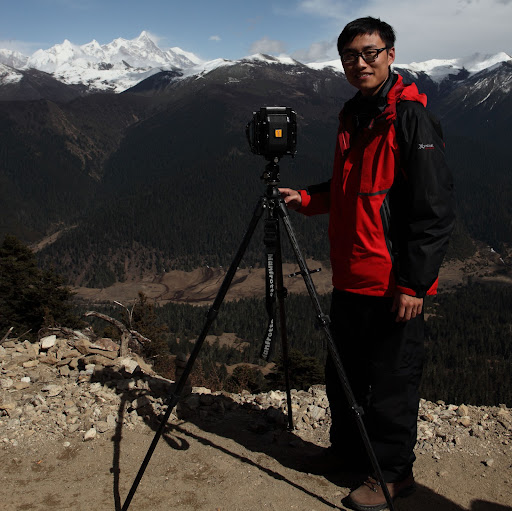Yu U Zheng
age ~62
from Virginia Beach, VA
- Also known as:
-
- Yahui Zheng
- Sherry Zheng
- Zheng Yu
- Zhen G Yu
Yu Zheng Phones & Addresses
- Virginia Beach, VA
- Milpitas, CA
- Katy, TX
- Palo Alto, CA
- Norfolk, VA
Lawyers & Attorneys

Yu Zheng, San Jose CA - Lawyer
view sourceAddress:
1536 Kerley Dr # 432, San Jose, CA 95112
(408)4776787 (Office)
(408)4776787 (Office)
Licenses:
California - Active 2013
Education:
Univ of Utah COL
Brigham Young Univ
Brigham Young Univ
Specialties:
Intellectual Property - 100%

Yu Zheng - Lawyer
view sourceAddress:
Winston & Strawn LLP
(229)22214xx (Office)
(229)22214xx (Office)
Licenses:
New York - Currently registered 2011
Education:
New York University School of Law
Name / Title
Company / Classification
Phones & Addresses
President
Yuyi, Inc
Nonclassifiable Establishments
Nonclassifiable Establishments
411 Broadway, Millbrae, CA 94030
YU NAILS & SPA LTD
TTT & K CO.
CLLCL GROUP, INC
GRAND BUFFET OH, INC
HANA STEAK HOUSE INC
Director
FAR EAST DEVELOPMENT INC
10333 Harwin Dr STE 520, Houston, TX 77036
6065 Jefferson Ave, Newport News, VA 23605
6065 Jefferson Ave, Newport News, VA 23605
IMPERIAL BUFFET, INC
Us Patents
-
Low-Cost Wavelength Division Multiplexed (Wdm) Coupler With More Flexible And Precise Optical Faith Adjustment
view source -
US Patent:6347170, Feb 12, 2002
-
Filed:May 6, 1999
-
Appl. No.:09/306373
-
Inventors:Yu Zheng - Sunnyvale CA
-
Assignee:JDS Uniphase, Inc. - Ontario
-
International Classification:G02B 632
-
US Classification:385 34, 385 16, 385 74
-
Abstract:The present invention discloses an improved wavelength division multiplexed (WDM) coupler. The WDM coupler includes a WDM filter attached to a first GRIN lens by applying a first heat-curing epoxy. The WDM coupler further includes the first GRIN lens inserted and fixed into a first holding tube by applying a second heat-curing epoxy. The WDM coupler further includes a second holding tube holding a dual fiber pigtail. The dual fiber pigtail is disposed at a first optimal position from the first GRIN lens to achieve a lowest reflection loss with the first and second holding tubes being in contact with each other. The dual fiber pigtail and the first and second holding tubes are fixed together by applying a third heat-curing epoxy. The WDM coupler further includes a second GRIN lens inserted and fixed into a third holding tube by applying a fourth heat-curing epoxy. The WDM coupler further includes a fourth holding tube holding a standard single fiber pigtail.
-
Compact, Low Cost In-Line Micro-Optic Components Made With Simplified Soldering Configuration And Method
view source -
US Patent:6485190, Nov 26, 2002
-
Filed:May 18, 1999
-
Appl. No.:09/315364
-
Inventors:Yu Zheng - Sunnyvale CA
-
Assignee:JDS Uniphase Inc. - Ontario
-
International Classification:G02B 638
-
US Classification:385 61, 385 51, 385 52, 385139, 385147
-
Abstract:The present invention discloses an improved in-line micro-optic component. The in-line micro-optic component includes an optical core attached to a first optical collimator by applying a first heat-curing epoxy. The in-line micro-optic component further includes a first gold-plated stainless steel holder holding the first optical collimator. The first optical collimator is inserted and fixed in the first stainless steel holder by applying a second heat-curing epoxy. The inline micro-optic component coupler further includes a second optical collimator. The in-line micro-optic component coupler further includes a second gold-plated stainless steel holder holding the second optical collimator. The second optical collimator is inserted and fixed in the second stainless steel holder by applying a third heat-curing epoxy. After the optical alignment between the first optical collimator with the optical core and the second optical collimator is done to achieve a lowest transmission loss, the first and the second stainless steel holders are soldered together.
-
Predictable Repeater Routing In An Integrated Circuit Design
view source -
US Patent:7487488, Feb 3, 2009
-
Filed:Oct 6, 2006
-
Appl. No.:11/544105
-
Inventors:Dajen Huang - Sunnyvale CA, US
Yi Wu - Santa Clara CA, US
Arjun Dutt - Santa Clara CA, US
Yu L. Zheng - Fremont CA, US -
Assignee:Sun Microsystems, Inc. - Santa Clara CA
-
International Classification:G06F 17/50
-
US Classification:716 14, 716 10
-
Abstract:A mechanism is disclosed for assigning repeaters to signal paths in an integrated circuit design. The mechanism involves reserving, in a first metal layer of the integrated circuit design, metal tracks for routing signals. Access points to a plurality of repeaters are reserved in a second metal layer of the integrated circuit design. Each access point is associated with a particular repeater. The design may have other layers between the second metal layer and a region reserved for the repeaters. The number of repeaters may be based on the number of metal tracks that are available to route signals through the first region. Signal paths are assigned routes that comprise at least a portion of one or more of the metal tracks. A route from signal paths requiring a repeater to access points to a particular repeater is determined. Thus, the signal paths are assigned to a repeater.
-
Fabry-Perot Laser
view source -
US Patent:20030103540, Jun 5, 2003
-
Filed:Dec 5, 2001
-
Appl. No.:10/010988
-
Inventors:Yu Zheng - Cupertino CA, US
-
International Classification:H01S005/10
-
US Classification:372/092000
-
Abstract:A new low-cost Fabry-Perot (FP) laser with narrow spectral width and low sensitivity to reflections and temperature variation is disclosed in this invention. The new FP laser includes a mirror, a laser gain medium, and a partial wavelength mirror. The partial wavelength mirror has a low-cost reflective wavelength filter coating on it. The reflective wavelength filter has a narrow reflective passband width, i.e., less than 2 nm at FWHM, and a peak reflectivity of around 30% with an isolation of over 25 dB outside the reflective passband. Also the reflective wavelength filter has low wavelength thermal dependence of 0.01 nm/C or less.
-
Fabry-Perot Laser
view source -
US Patent:20030103541, Jun 5, 2003
-
Filed:Mar 11, 2002
-
Appl. No.:10/095949
-
Inventors:Yu Zheng - Cupertino CA, US
-
International Classification:H01S003/08
-
US Classification:372/092000
-
Abstract:An improved low-cost Fabry-Perot (FP) laser with narrow spectral width and low sensitivity to reflections and temperature variation is disclosed in this invention. The improved FP laser includes a mirror, a laser gain medium (chip), an anti-reflection coating, and a wavelength mirror. The laser chip has the mirror on its non-light emitting facet and the anti-reflection coating on its light emitting facet. The wavelength mirror is coated on a glass substrate. Both the laser chip and the wavelength mirror are fixed onto a submount. The wavelength mirror has a low-cost reflective wavelength filter coating on it. The reflective wavelength filter has a narrow reflective passband width, i.e., less than 2 nm at FWHM, and a peak reflectivity of around 30% with an isolation of over 25 dB outside the reflective passband. Also the reflective wavelength filter has low wavelength thermal dependence of 0.01 nm/C or less.
-
Free-Space Optical Isolator
view source -
US Patent:20030214714, Nov 20, 2003
-
Filed:May 14, 2002
-
Appl. No.:10/144954
-
Inventors:Yu Zheng - Cupertino CA, US
-
International Classification:G02B005/30
G02B027/28
H01S003/00 -
US Classification:359/484000, 359/494000, 359/495000, 359/497000, 372/703000
-
Abstract:A new low-cost free-space optical isolator is disclosed in this invention. The new free-space optical isolator includes an input polarizer, a Faraday rotator, an output polarizer, and a magnetic tube. By employing the recently developed subwavelength optical elements (SOEs) technology, the input polarizer is directly manufactured on the left surface of the Faraday rotator and the output polarizer is directly manufactured on the right surface of the Faraday rotator. Relative to the polarization axis of the input polarizer, the polarization axis of the output polarizer is 45 degrees clockwise from left to right.
-
Method And System For Providing An Improved Three Port Wavelength Division Multiplexer
view source -
US Patent:61671754, Dec 26, 2000
-
Filed:Jul 8, 1999
-
Appl. No.:9/349549
-
Inventors:Yu Zheng - Sunnyvale CA
Feng Liu - Sunnyvale CA
Steven Guoxin Zhu - Fremont CA -
Assignee:Oplink Communications, Inc. - San Jose CA
-
International Classification:G02B 626
-
US Classification:385 47
-
Abstract:A system and method for providing a wavelength division multiplexer is disclosed. In one aspect, the system and method include providing a housing for the wavelength division multiplexer. The housing includes a first port having a first aperture therein, a second port having a second aperture and a first plurality of apertures therein, and a third port having a third aperture and a second plurality of apertures therein. The second and third apertures are coupled to the first aperture. The first plurality of apertures are disposed symmetrically around the second aperture. The second plurality of apertures are disposed symmetrically around the third aperture. In another aspect, the method and system include providing a wavelength division multiplexer. The wavelength division multiplexer includes a first port including a first collimator, a second port coupled to the first port, and a third port coupled to the first port. The second port includes a second collimator and a first plurality of joints for affixing the second collimator.
-
Dual Fiber Optical Collimator
view source -
US Patent:61481262, Nov 14, 2000
-
Filed:Oct 7, 1998
-
Appl. No.:9/167805
-
Inventors:Yu Zheng - Sunnyvale CA
-
International Classification:G02B 632
-
US Classification:385 34
-
Abstract:This invention discloses a dual-fiber optical collimator. The collimator includes a dual fiber pigtail and a GRIN lens wherein the dual fiber pigtail securely fixed to the GRIN lens by a ultraviolet-curing epoxy and a first heat-curing bonding epoxy. The collimator further includes a glass tube securely fixed to the dual fiber pigtail by a second heat-curing bonding epoxy. A stainless steel holder securely fixed to the glass tube by a third heat-curing bonding epoxy. The first, second and third heat-curing bonding epoxy is a heat-curing epoxy of 353ND epoxy. The ultraviolet-curing epoxy applied between the GRIN lens and the dual fiber pigtail is an ultraviolet-curing epoxy of ECI4481 epoxy or an ultravioet-curing epoxy of OG154 epoxy. The stainless steel holder securely fixed to the glass tube by a third heat-curing bonding epoxy is disposed a distance away from the first heat-curing bonding epoxy and the ultraviolet-curing epoxy.
Resumes

Engineer Lead
view sourceLocation:
Virginia Beach, VA
Industry:
Insurance
Work:
Anthem, Inc.
Engineer Lead
Engineer Lead
Education:
Old Dominion University

Senior Optical-Mechanical Design Engineer
view sourceLocation:
7 Technology Dr, Livermore, CA 94551
Industry:
Semiconductors
Work:
Purdue University Sep 2009 - May 2013
Master Student
Kla-Tencor Sep 2009 - May 2013
Senior Optical-Mechanical Design Engineer
Purdue University Jun 2011 - Jul 2011
Instructor of Software Engineering, Gifted Education Resource Institute Summer Residential 201
Boyu High Tech Nov 2010 - Feb 2011
Initiator
Te Connectivity Mar 2009 - Apr 2009
Product Development Engineer
Master Student
Kla-Tencor Sep 2009 - May 2013
Senior Optical-Mechanical Design Engineer
Purdue University Jun 2011 - Jul 2011
Instructor of Software Engineering, Gifted Education Resource Institute Summer Residential 201
Boyu High Tech Nov 2010 - Feb 2011
Initiator
Te Connectivity Mar 2009 - Apr 2009
Product Development Engineer
Education:
Purdue University 2009 - 2011
Masters, Engineering Shanghai Jiao Tong University 2005 - 2009
Bachelor of Engineering, Bachelors, Aerospace Engineering
Masters, Engineering Shanghai Jiao Tong University 2005 - 2009
Bachelor of Engineering, Bachelors, Aerospace Engineering
Skills:
Matlab
Simulink
Mathematica
C++
Finite Element Analysis
Simulations
Ansys
Solidworks
Latex
Pro Engineer
Mandarin
Unigraphics
Numerical Analysis
Engineering
Mechanical Engineering
Simulink
Mathematica
C++
Finite Element Analysis
Simulations
Ansys
Solidworks
Latex
Pro Engineer
Mandarin
Unigraphics
Numerical Analysis
Engineering
Mechanical Engineering
Languages:
Mandarin
English
English

Software Engineer
view sourceLocation:
1619 Conway St, Milpitas, CA 95035
Industry:
Computer Software
Work:
Google
Software Engineer
Linkedin Jul 2014 - Mar 2016
Senior Software Engineer
Cadence Design Systems Jul 2012 - Jul 2014
Software Engineering Director
Cadence Design Systems Apr 2007 - Jul 2012
Senior Member of Consulting Staff
Cadence Design Systems Apr 2004 - Apr 2007
Member of Consulting Staff
Software Engineer
Linkedin Jul 2014 - Mar 2016
Senior Software Engineer
Cadence Design Systems Jul 2012 - Jul 2014
Software Engineering Director
Cadence Design Systems Apr 2007 - Jul 2012
Senior Member of Consulting Staff
Cadence Design Systems Apr 2004 - Apr 2007
Member of Consulting Staff
Education:
Columbia University In the City of New York 1999 - 2003
Doctorates, Doctor of Philosophy, Electrical Engineering Peking University 1996 - 1999
Master of Science, Masters Peking University 1991 - 1996
Bachelors, Bachelor of Science
Doctorates, Doctor of Philosophy, Electrical Engineering Peking University 1996 - 1999
Master of Science, Masters Peking University 1991 - 1996
Bachelors, Bachelor of Science
Skills:
Tcl
C++
C
Static Timing Analysis
Signal Integrity
Perl
Eda
Timing
Asic
Java
Algorithms
Scripting
Programming
Simulations
Tcl/Tk
Verilog
Vhdl
Python
Web Applications
Spring Mvc
Apache Kafka
C++
C
Static Timing Analysis
Signal Integrity
Perl
Eda
Timing
Asic
Java
Algorithms
Scripting
Programming
Simulations
Tcl/Tk
Verilog
Vhdl
Python
Web Applications
Spring Mvc
Apache Kafka
Languages:
Mandarin

Yu Lin Zheng
view source
Yu Bo 于波 Zheng
view source
Yu Zheng
view source
Yu Zheng
view source
Yu Zheng
view sourceLocation:
United States
Youtube
Myspace
Plaxo

Zheng, Yu
view sourceColumbia Business School
Flickr

Yu Zheng Wang
view source
Yu Xun Zheng
view source
Yu Mei Zheng
view source
Kevin Yu Zheng
view source
Yu Hui Zheng
view source
Yu Ting Zheng
view source
Yu Lu Zheng
view source
Shawn Lee Yu Zheng
view sourceGoogleplus

Yu Zheng
Work:
City University of Hong Kong
Education:
Washington University in St. Louis - Economics

Yu Zheng
Education:
Manchester Business School, University of Minnesota

Yu Zheng
Education:
Universita' per stranieri di Perugia - Comunicazione internazionale

Yu Zheng
Work:
Nokia Siemens Networks

Yu Zheng
Education:
Case Western Reserve University

Yu Zheng
Education:
Wu han university

Yu Zheng
About:
Hiking, Baking, Eating:)
Tagline:
I love baking!

Yu Zheng
Classmates

Yu Zheng (Chen)
view sourceSchools:
Sylvania Arbor Hills Junior High School Sylvania OH 1999-2001
Community:
Jeff Leybourn, Christena Smith, Trent Johnson, Dorwin Kujawski, Julie Harris
Get Report for Yu U Zheng from Virginia Beach, VA, age ~62














